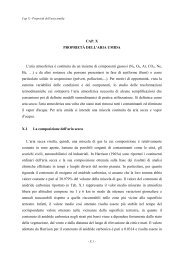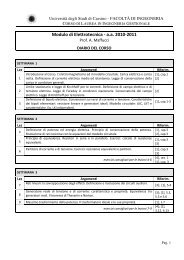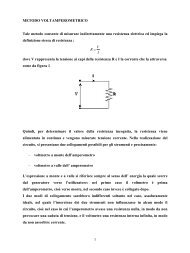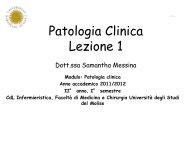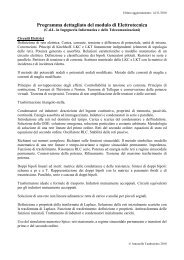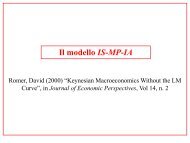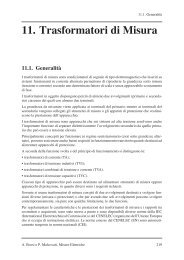Agilent Vector Signal Analysis Basics - Agilent Technologies
Agilent Vector Signal Analysis Basics - Agilent Technologies
Agilent Vector Signal Analysis Basics - Agilent Technologies
Create successful ePaper yourself
Turn your PDF publications into a flip-book with our unique Google optimized e-Paper software.
I-Q modulator<br />
The device used in digital communications to generate vector modulation<br />
is the I-Q modulator. The I-Q modulator puts the encoded digital I and Q<br />
baseband information onto the carrier. See Figure 2-4. The I-Q modulator<br />
generates signals in terms of I and Q components; fundamentally it is a<br />
hardware (or software) implementation of a rectangular to polar coordinate<br />
conversion.<br />
Rectangular<br />
coordinates<br />
Polar<br />
coordinates<br />
I baseband<br />
(In-phase component)<br />
Local oscillator<br />
(carrier frequency)<br />
90 deg.<br />
phase shift<br />
Σ<br />
Summing<br />
circuits<br />
Composite<br />
output signal<br />
(I-Q modulated carrier)<br />
Q baseband<br />
(Q uadrature component)<br />
Figure 2-4. I-Q modulator<br />
The I-Q modulator receives the I and Q baseband signals as inputs and<br />
mixes them with the same local oscillator (LO). Thus, I and Q are both<br />
upconverted to the RF carrier frequency. The I information amplitude<br />
modulates the carrier producing the in-phase component. The Q information<br />
amplitude modulates a 90-degree (orthogonal) phase shifted version of<br />
the carrier producing the quadrature component. These two orthogonal<br />
modulated carrier signals are summed together producing the composite<br />
I-Q modulated carrier signal. The main advantage of I-Q modulation is the<br />
symmetric ease of combining independent signal components into a single,<br />
composite signal, and later splitting the composite signal into its independent<br />
component parts.<br />
<strong>Signal</strong>s that are separated by 90 degrees are known as being orthogonal to<br />
each other, or in quadrature. The quadrature relationship between I and Q<br />
signals means that these two signals are truly independent. They are two<br />
independent components of the same signal. While changes of the Q input<br />
certainly alter the composite output signal, they do not change the I<br />
component at all. Similarly, changes of the I input have no effect on the<br />
Q signal.<br />
21





